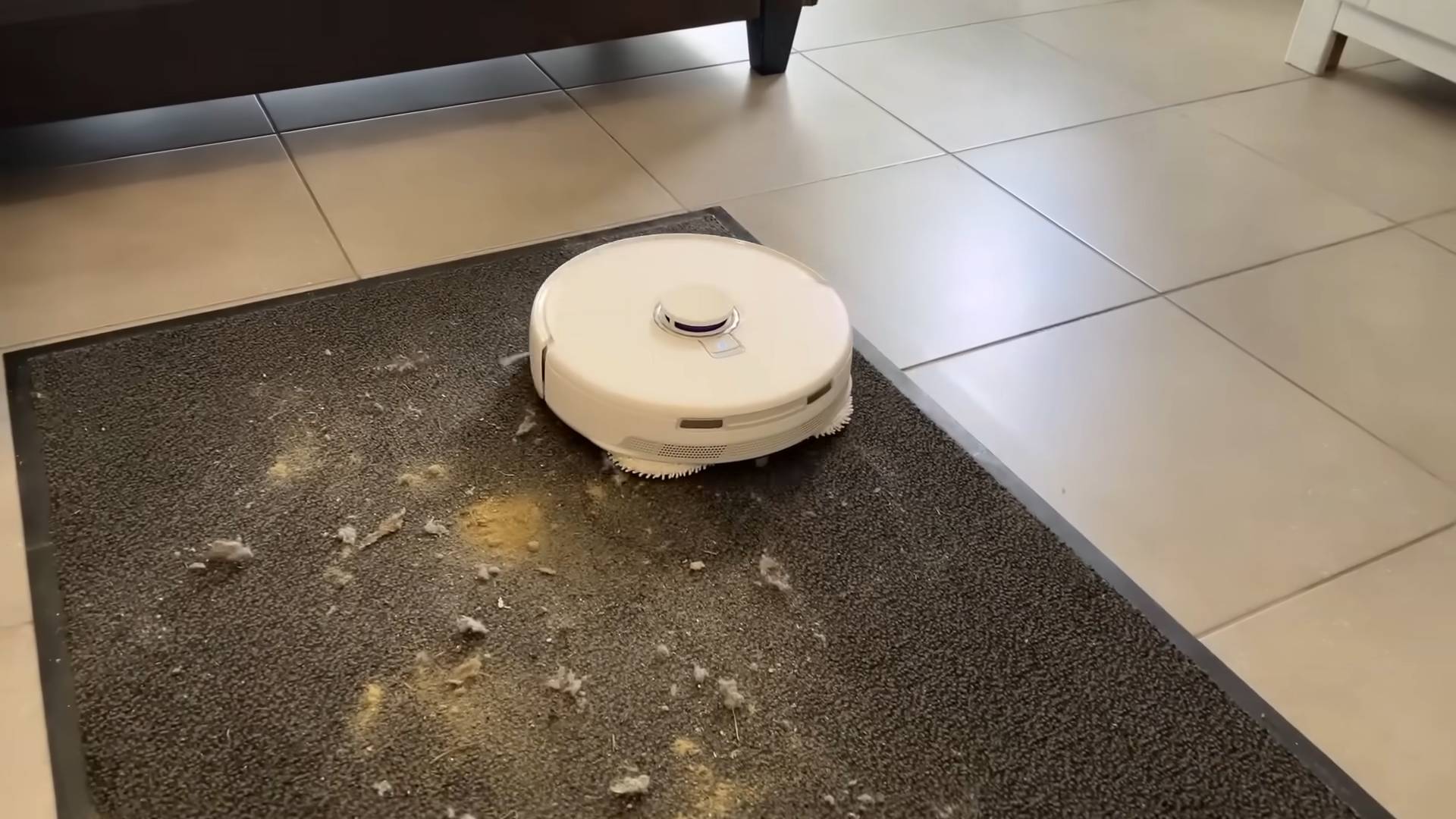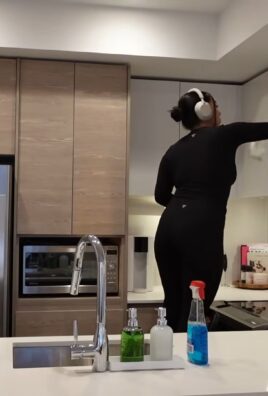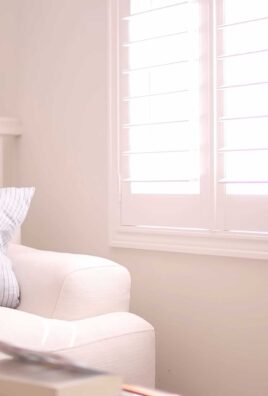Time for cleaning busy households can feel like a never-ending battle, right? I totally get it! Between work, family, and trying to squeeze in a little “me time,” the thought of tackling a deep clean can be downright overwhelming. But what if I told you there were simple, DIY tricks that could drastically cut down on your cleaning time and effort?
For centuries, cultures around the world have developed ingenious cleaning hacks, passed down through generations. Think about it – before fancy cleaning products, people relied on natural ingredients and clever techniques to keep their homes sparkling. These time-tested methods are often more effective (and eco-friendly!) than what you find on store shelves.
That’s why I’m so excited to share these game-changing DIY cleaning hacks with you. We all deserve to come home to a clean and inviting space without spending hours scrubbing. These tips will not only save you precious time for cleaning busy schedules, but they’ll also help you create a healthier and happier home environment. Get ready to reclaim your weekends and say goodbye to cleaning overwhelm!

DIY Time-Saving Cleaning Hacks for Busy Bees
Okay, let’s be honest, cleaning isn’t exactly anyone’s favorite pastime, especially when you’re already juggling a million things. But a clean home is a happy home, right? So, I’ve compiled some of my absolute favorite time-saving cleaning hacks that have seriously revolutionized my cleaning routine. These are tried and tested, and I promise they’ll help you reclaim your precious free time!
Hack 1: The Shower Power Cleaner
This is my go-to for keeping the shower sparkling without endless scrubbing. It’s all about prevention, and this spray is your best friend.
What You’ll Need:
* Spray bottle (a clean, empty one, of course!)
* 1 cup white vinegar
* 1 cup dish soap (Dawn works wonders!)
* Optional: a few drops of your favorite essential oil (tea tree, eucalyptus, or lavender are great for their antibacterial properties and lovely scents)
Step-by-Step Instructions:
1. Heat the Vinegar: Gently heat the vinegar in the microwave for about a minute. You want it warm, not boiling. This helps it mix better with the dish soap.
2. Combine Ingredients: Carefully pour the warm vinegar into your spray bottle. Then, add the dish soap.
3. Add Essential Oils (Optional): If you’re using essential oils, add a few drops now.
4. Gently Mix: Gently swirl the bottle to combine the ingredients. Avoid shaking vigorously, as this will create too many bubbles.
5. Spray After Each Shower: After each shower, while the shower walls are still wet, spray the mixture all over the shower walls, door, and fixtures.
6. Let it Sit: Let the spray sit for a few minutes. No need to rinse! The soap and vinegar will work their magic to prevent soap scum and mildew buildup.
Why this works: The vinegar is a natural disinfectant and helps break down soap scum, while the dish soap helps to lift dirt and grime. Using it after each shower prevents buildup, so you don’t have to spend hours scrubbing later.
Hack 2: Microwave Cleaning Made Easy
Microwaves can get pretty gross, pretty quickly. But this hack makes cleaning them a breeze.
What You’ll Need:
* Microwave-safe bowl
* 1 cup water
* 1 tablespoon white vinegar
* Lemon or lime slices (optional, for a fresh scent)
Step-by-Step Instructions:
1. Combine Water and Vinegar: Pour the water and vinegar into the microwave-safe bowl. Add the lemon or lime slices, if using.
2. Microwave for 5 Minutes: Place the bowl in the microwave and microwave on high for 5 minutes. The water will boil and create steam.
3. Let it Sit: Leave the microwave door closed for another 5-10 minutes. The steam will loosen any stuck-on food particles.
4. Wipe Clean: Carefully remove the bowl (it will be hot!). Then, use a damp cloth or sponge to easily wipe away the loosened grime. You’ll be amazed at how easily it comes off!
Why this works: The steam softens the dried food splatters, making them much easier to wipe away. The vinegar helps to disinfect and deodorize the microwave.
Hack 3: Speedy Toilet Bowl Cleaning
No one enjoys cleaning the toilet, but this hack makes it quick and relatively painless.
What You’ll Need:
* Toilet bowl cleaner (your favorite brand)
* Toilet brush
* Baking soda
* White vinegar
Step-by-Step Instructions:
1. Flush the Toilet: Flush the toilet to wet the bowl.
2. Apply Toilet Bowl Cleaner: Squirt your favorite toilet bowl cleaner around the rim of the bowl, allowing it to coat the sides.
3. Let it Sit: Let the cleaner sit for the recommended time on the bottle (usually around 10 minutes).
4. Sprinkle Baking Soda: Sprinkle about 1/2 cup of baking soda into the toilet bowl.
5. Pour in Vinegar: Pour about 1 cup of white vinegar into the bowl. The mixture will fizz – this is normal!
6. Scrub: Use your toilet brush to scrub the bowl thoroughly, paying attention to any stains or buildup.
7. Flush: Flush the toilet to rinse away the cleaner and grime.
Why this works: The toilet bowl cleaner tackles tough stains and disinfects. The baking soda and vinegar create a fizzing action that helps to loosen stubborn grime and deodorize the bowl.
Hack 4: Dusting Like a Pro (and Faster!)
Dusting can feel like a never-ending chore. But these tips will help you dust more efficiently and less frequently.
What You’ll Need:
* Microfiber cloths (these are essential!)
* Furniture polish (optional)
* Vacuum cleaner with a brush attachment
* Old sock (yes, really!)
Step-by-Step Instructions:
1. Vacuum First: Before you start dusting, vacuum the floors and upholstery to remove loose dust and dirt. This prevents you from just spreading the dust around.
2. Dust from Top to Bottom: Always dust from the top down. Start with ceiling fans, light fixtures, and high shelves, working your way down to lower surfaces.
3. Use Microfiber Cloths: Microfiber cloths are amazing for trapping dust. Dampen the cloth slightly for even better results.
4. Get into Crevices: Use the vacuum cleaner with the brush attachment to dust hard-to-reach areas, such as baseboards, corners, and lampshades.
5. Polish Furniture (Optional): If you’re using furniture polish, spray it onto a microfiber cloth (not directly onto the furniture) and wipe down the surfaces.
6. Dust Blinds with a Sock: For blinds, slip an old sock over your hand and use it to dust each slat. This is much faster and easier than using a cloth.
Why this works: Vacuuming first removes loose dust. Dusting from top to bottom prevents you from having to re-dust lower surfaces. Microfiber cloths trap dust effectively. The sock trick makes dusting blinds a breeze.
Hack 5: Quick Kitchen Counter Cleanup
Kitchen counters are magnets for spills and crumbs. This quick cleanup routine will keep them looking their best.
What You’ll Need:
* Spray bottle with all-purpose cleaner (or a mixture of water and vinegar)
* Microfiber cloth
* Dish soap
* Sponge
Step-by-Step Instructions:
1. Clear the Counters: Remove any items from the counters, such as appliances, dishes, and decorations.
2. Spray with Cleaner: Spray the counters with your all-purpose cleaner or vinegar solution.
3. Wipe Clean: Use a microfiber cloth to wipe down the counters, removing any spills or crumbs.
4. Wash Dishes: If there are any dirty dishes on the counters, wash them or load them into the dishwasher.
5. Wipe Up Spills Immediately: The key to keeping your counters clean is to wipe up spills as soon as they happen. This prevents them from drying and becoming harder to remove.
6. Tackle Sticky Spots: For sticky spots, use a sponge with a little dish soap to scrub gently.
Why this works: Regularly wiping down the counters prevents buildup of grime and spills. Addressing spills immediately makes them easier to clean.
Hack 6: Decluttering as You Go
This isn’t exactly a cleaning hack, but it saves you time in the long run. It’s all about preventing clutter from accumulating in the first place.
What You’ll Need:
* Boxes or bags for donations
* Trash can
Step-by-Step Instructions:
1. Designate a Donation Station: Keep a box or bag in a convenient location for items you want to donate.
2. One In, One Out: For every new item you bring into your home, try to get rid of one similar item. This helps to prevent clutter from building up.
3. Toss Expired Items: Regularly check your pantry, refrigerator, and bathroom cabinets for expired items and toss them out.
4. Put Things Away Immediately: Make it a habit to put things away as soon as you’re finished using them. This prevents clutter from accumulating on surfaces.
5. Do a Quick Sweep Every Day: Take a few minutes each day to tidy up any clutter that has accumulated. This will prevent it from becoming overwhelming.
Why this works: Decluttering regularly prevents clutter from building up, making it easier to clean and organize your home.
Hack 7: Speed Cleaning Checklist
Sometimes, you just need to get the basics

Conclusion
So, there you have it! Transforming your cleaning routine with this simple, yet incredibly effective DIY trick is a game-changer for anyone juggling a busy schedule. We’ve shown you how to create a powerful cleaning solution using ingredients you likely already have in your pantry, saving you time, money, and a trip to the store. But more than just convenience, this DIY approach allows you to control exactly what goes into your cleaning products, avoiding harsh chemicals and creating a healthier home environment for you and your family.
This isn’t just about cleaning; it’s about reclaiming your time and taking control of your well-being. Imagine spending less time scrubbing and more time doing the things you love. That’s the promise of this DIY cleaning solution.
Why is this DIY trick a must-try? Because it’s efficient, cost-effective, eco-friendly, and customizable. You’re not just cleaning; you’re creating a healthier, happier home.
Variations and Suggestions
Don’t be afraid to experiment! This recipe is a fantastic base, but you can easily adapt it to suit your specific needs and preferences.
* For extra disinfecting power: Add a few drops of tea tree oil or eucalyptus oil. These essential oils have natural antibacterial and antiviral properties.
* For a fresh, citrusy scent: Infuse your vinegar with citrus peels (lemon, orange, grapefruit) for a week before using it in the recipe. This will add a pleasant aroma to your cleaning solution.
* For stubborn stains: Create a paste of baking soda and water and apply it to the stain before spraying with your DIY cleaner. Let it sit for a few minutes, then scrub gently.
* For different surfaces: While this cleaner is generally safe for most surfaces, always test it in an inconspicuous area first, especially on delicate materials like marble or granite. You can also dilute the solution further for more sensitive surfaces.
We encourage you to embrace the spirit of DIY and make this recipe your own. The possibilities are endless!
Now, it’s your turn! We’re confident that once you try this DIY cleaning trick, you’ll be amazed by the results. It’s a simple, effective, and sustainable way to keep your home sparkling clean, even when you’re short on time.
We’re eager to hear about your experiences. Did you try any variations? What surfaces did you use it on? What were the results? Share your tips, tricks, and feedback in the comments below. Let’s build a community of DIY cleaning enthusiasts and help each other create cleaner, healthier homes! So go ahead, give it a try, and let us know what you think! We are sure that you will find that this is the best way to **time for cleaning busy** homes.
FAQ
Q: Is this DIY cleaner safe for all surfaces?
A: While this DIY cleaner is generally safe for most surfaces, it’s always best to test it in an inconspicuous area first, especially on delicate materials like marble, granite, or wood. The acidity of the vinegar could potentially damage certain surfaces. If you’re unsure, dilute the solution further with water or avoid using it on those surfaces altogether. For wood, ensure the surface is sealed and avoid prolonged contact with the cleaner. For natural stone, consider using a pH-neutral cleaner specifically designed for those materials.
Q: Can I use a different type of vinegar?
A: White vinegar is the most commonly recommended type of vinegar for cleaning due to its high acidity and lack of color, which minimizes the risk of staining. However, you can experiment with other types of vinegar, such as apple cider vinegar. Keep in mind that apple cider vinegar has a distinct smell and may leave a slight residue, so it’s best to test it in an inconspicuous area first. Avoid using balsamic vinegar or red wine vinegar, as they can stain surfaces.
Q: How long will this DIY cleaner last?
A: This DIY cleaner typically lasts for several weeks when stored in a cool, dark place. The vinegar acts as a natural preservative, helping to prevent bacterial growth. However, it’s best to use it within a month or two for optimal effectiveness. If you notice any changes in color, smell, or consistency, discard the cleaner and make a fresh batch.
Q: Can I add essential oils to this cleaner?
A: Yes, adding essential oils is a great way to customize your DIY cleaner and add a pleasant scent. Some popular essential oils for cleaning include tea tree oil, eucalyptus oil, lavender oil, lemon oil, and orange oil. These oils have natural antibacterial, antiviral, and antifungal properties, which can enhance the cleaning power of your solution. Add a few drops of your favorite essential oil to the spray bottle and shake well before each use. Be sure to research the safety of essential oils before using them, especially if you have pets or young children.
Q: What if I don’t like the smell of vinegar?
A: The smell of vinegar can be off-putting to some people. Fortunately, there are several ways to minimize the vinegar odor. First, you can infuse your vinegar with citrus peels (lemon, orange, grapefruit) for a week before using it in the recipe. This will add a fresh, citrusy scent to your cleaning solution. Second, you can add a few drops of your favorite essential oil to the spray bottle. Third, the vinegar smell typically dissipates quickly after cleaning, especially if you open windows to ventilate the area.
Q: Can I use this cleaner on my electronics?
A: No, it’s generally not recommended to use this DIY cleaner on electronics. The moisture could damage sensitive components. Instead, use a microfiber cloth lightly dampened with water or a cleaner specifically designed for electronics. Always unplug the device before cleaning it.
Q: Is this cleaner safe for pets and children?
A: While this DIY cleaner is made with natural ingredients, it’s still important to exercise caution when using it around pets and children. Vinegar can be irritating if ingested or if it comes into contact with the eyes. Keep the spray bottle out of reach of children and pets. If your pet or child accidentally ingests the cleaner, contact a veterinarian or poison control center immediately. When cleaning floors, allow them to dry completely before allowing pets or children to walk on them.
Q: Can I use this cleaner to clean my toilet?
A: Yes, this DIY cleaner can be used to clean your toilet. Simply spray the cleaner inside the bowl and around the rim, let it sit for a few minutes, then scrub with a toilet brush and flush. For extra cleaning power, you can sprinkle baking soda into the bowl before spraying with the cleaner. The combination of vinegar and baking soda creates a fizzing action that helps to loosen dirt and grime.
Q: What are the benefits of using a DIY cleaner instead of store-bought cleaners?
A: There are several benefits to using a DIY cleaner instead of store-bought cleaners. First, DIY cleaners are typically more cost-effective, as they are made with inexpensive ingredients that you likely already have in your pantry. Second, DIY cleaners allow you to control exactly what goes into your cleaning products, avoiding harsh chemicals, artificial fragrances, and other potentially harmful ingredients. Third, DIY cleaners are more environmentally friendly, as they reduce your reliance on plastic packaging and toxic chemicals that can pollute the environment. Finally, making your own cleaning products can be a fun and rewarding experience, allowing you to customize your cleaners to suit your specific needs and preferences.





Leave a Comment